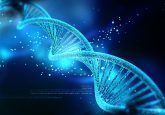Mice and humans share urinary biomarker for Type 2 diabetes

A recent collaboration by scientists from École Polytechnique Fédérale de Lausanne (EPFL; Switzerland), Eidgenössische Technische Hochschule Zürich (ETH Zurich; Switzerland) and the Centre Hospitalier Universitaire Vaudois (CHUV; Switzerland) has identified a gene common to both mice and humans that is involved in Type 2 diabetes.
Researchers from EPFL carried out a detailed study of the genome and phenome of all 183 members of a family of mice. The genome is the complete DNA of an organism and the phenome is the set of all observable phenotypes (or clinical traits).
Johan Auwerx, Director of the Laboratory of Integrative Systems Physiology at EPFL, explained: “By comparing the metabolism of twins subjected to different life conditions and different diets, it is possible to exactly assess the influence of the environment on the expression of certain genes and the way this affects clinical features and the risk for developing diseases.”
New spectrometry technology developed at ETH Zurich was then used to introduce a new tier to the analytical process. This allowed the team to analyze each mouse’s proteome, or set of expressed proteins. The metabolome, the complete set of small-molecule metabolites, was also studied for each of the mice.
Linking the phenome, genome, proteome and metabolome for each mouse allowed the researchers to identify a specific gene that plays a significant role in the development of Type 2 diabetes. Mice with a high fat diet were found to have an increased risk of developing diabetes if this gene was active.
The metabolomics study of the mouse family also revealed that the diabetic mice have low urinary levels of a certain metabolite, 2-aminoadipate. The concentration of the metabolite was found to strongly correlate with the presence of the identified gene, but not with the body fat of the mouse. This supported the hypothesis that it is the gene that regulates expression of the protein, and not the fat content of the diet.
This discovery led to the idea that perhaps this correlation would also occur in humans. Work led by the CHUV indicated that the correlation did indeed occur in humans as in mice: the rate of 2- aminoadipase was lower in affected individuals.
There is hope that further similar approaches will aid the development of new diagnostic tools, which could potentially be applied to a variety of other diseases. Auwerx described how “To me, a new age for biology, and soon medicine, has just begun.”





